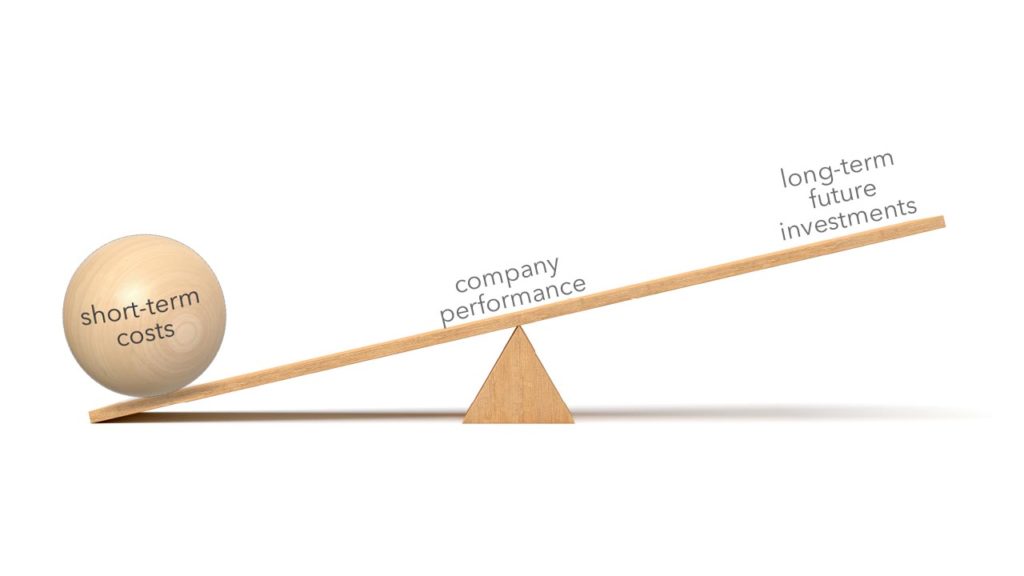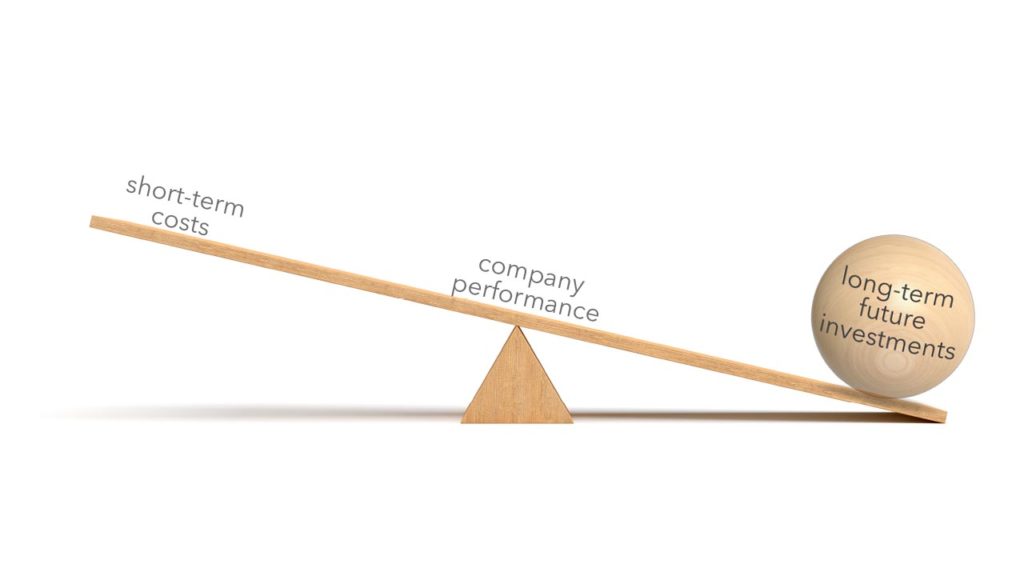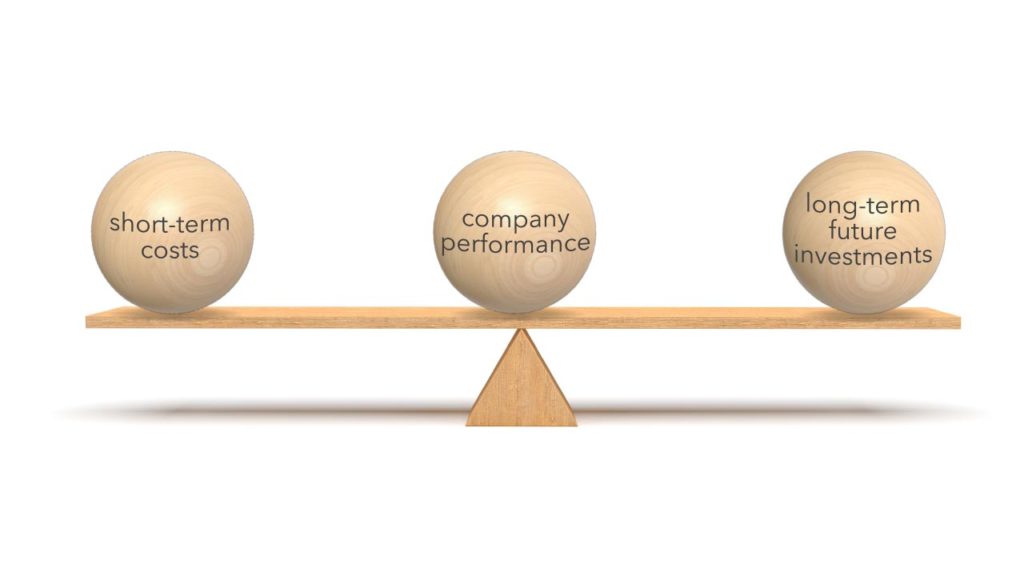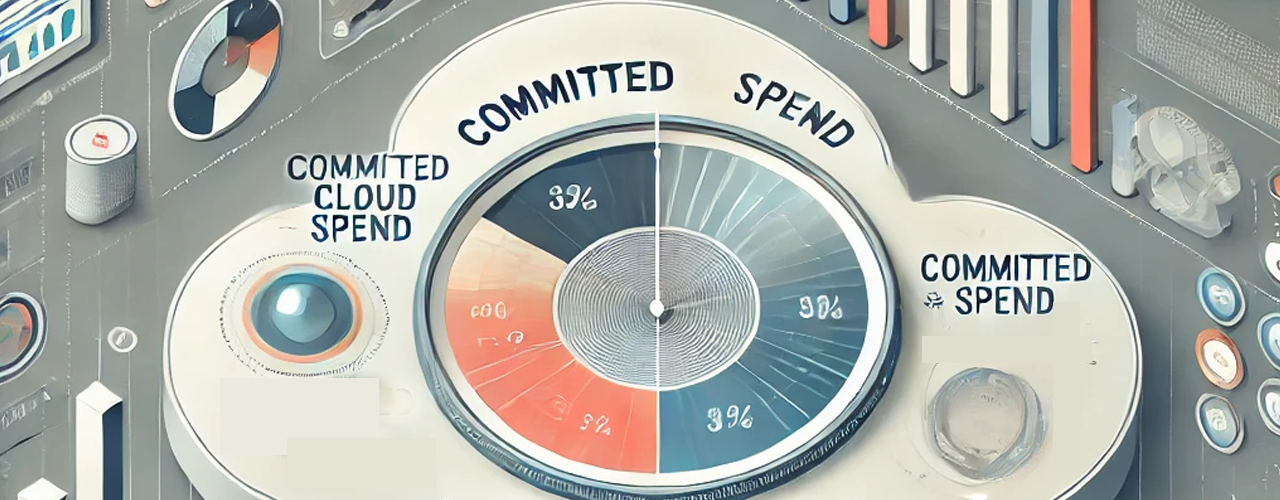
A CIO’s guide to cost optimization without sacrificing business impact during a downturn.
Let’s face it. The recession isn’t on the horizon; it’s already here, lightning illuminating darkening storm clouds. Market uncertainty can strike at any time. Political pendulums in the US and EU may usher new regulation, making your industry subject to sudden operational shifts. Rising inflation influences consumer confidence and purchasing power, negatively impacting future revenue forecasts. And as a CIO, you can count on increasing pressures to cut expenditures as a part of an enterprise-wide cost optimization initiative. But, you may ask yourself…. where do you start your cost management program while still saving for long-term strategic investments to drive industry innovation, transformation and competitiveness?
It’s a balancing act.

Go all in on short-term cost cuts
Let’s hypothetically say your first gut reflex is to make some impulsive or aggressive cost-cutting decisions (layoffs of FTEs and shift to contractor labor) to show immediate savings and efficiency. You invest what little you have left over after making cuts into making performance optimization improvements to satisfy stakeholders who are impatient for ROI. In this scenario, the future can wait as this solves your problem for the next quarter or two.
Drawbacks to this approach
- Short-sighted strategy that will come back to bite you the very next fiscal year
- IT technical debt from the tenured folks you laid off
- Lack of leadership champions to rally around your cost management program because there is no long-term sustainability or stability assurances

Go all in on long-term future investment
You second guess your primary instinct. Instead of gutting teams or projects to conserve cash flows, you decide to restructure current teams across a tighter prioritization of projects to maintain performance and productivity. By doing more with less, you’re able to dedicate resources into multi-year strategic project bets that may drive business value over a longer time horizon.
Drawbacks to this approach
- Resistance by IT legacy teams to rapid organization change management, resulting in decreased or resistant morale
- Uncertainty or doubt around long-term project feasibility in ever changing market/industry
- Stakeholder restlessness and impatience since it takes too long to show value

Go all in on a balanced cost management program
A CIO’s cost optimization utopia is one where you can systematically reduce IT costs, make performance improvements, and make repeatable investments in the future.
What’s the secret to achieving balance in your cost management program for 2022 and beyond?
Err on the side of caution when cost cutting. Eliminate, right size, realign.
Eliminate
This doesn’t automatically mean headcount. Search for ways to eliminate manual burdensome workflows and repeatable activities that slow down team efficiency and productivity. Replace them with automated outsourced solutions like Azul Platform Prime to liberate development teams from maintenance fire drills and dedicate them to higher-value innovation and strategic projects.
For example, Workday leveraged Prime to decrease total pause time per JVM from more than 11 hours per week to just 14 seconds in their key customer-facing application, reducing operational issues by over 95%. This strategy saved 42,000 person-hours over 1.5 years that would have been spent on performance tuning, saving many millions of dollars and freeing developers to create rather than troubleshoot.
Right size
Investigate options to reduce spiraling infrastructure costs. Audit the value of legacy systems, outdated applications, and survey employees to assess active use of vendor subscriptions and seat licenses. Create, leverage or extend horizontal shared services across the organization to better serve internal stakeholder needs and improve satisfaction. If your IT team has morphed into a truly distributed workforce, consider consolidating office real estate holdings and on-premises or hybrid environment server storage.
One solution is to drive down capex and opex for Java while delivering performance optimization and business value. According to Forrester’s Total Economic Impact Study, Azul’s Platform Prime pays for itself in only 3 months, driving 224% (or $ 2.2M) ROI in over 3 years. For example, by leveraging Platform Prime, Taboola’s VP of IT Ariel Pisetzky With Azul, Taboola reduced front-end servers by 30+% and database servers by 50%, saving millions of dollars from both freed-up hardware and avoided hosting costs.
Realign
Be open and agile to retiring complex legacy processes that aren’t prioritizing positive employee or customer experiences and/or satisfaction. Focus on making incremental operational improvements across channels and/or departments that remove bottlenecks/friction points and align to key performance indicators for increasing retention.
Here’s a sample use case that illustrates the realignment principle in enterprise practice. Historically, Puma’s purchasing agents updated thousands of orders at a time, overloading the system and triggering ‘stop the world’ garbage collection pauses that caused long order processing delays and unacceptable slowdowns for Java-based applications powering their web presence, stores and manufacturing operations. By migrating their supply chain, product information and other platforms to Azul Platform Prime, Puma provides faster processing and an enhanced user experience.
Conclusion
To achieve the desired balance and ensure enterprise continuity of your IT cost management program in a recessionary climate, it’s best practice to revisit your ERR strategy at the end of every quarter.
For deeper insights
Read Azul’s Better Java and Infrastructure Cost Savings for Big Data Technologies Brief



